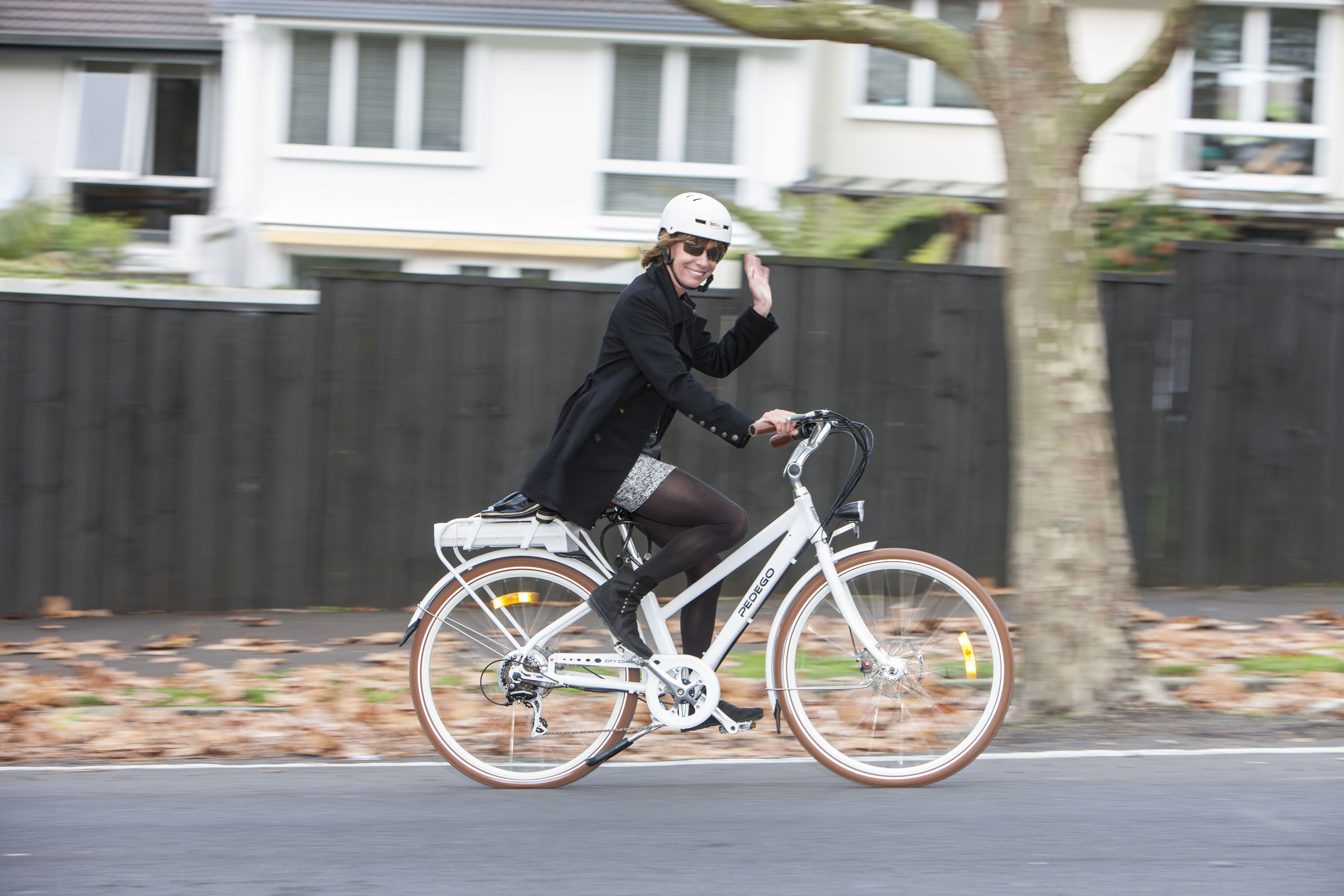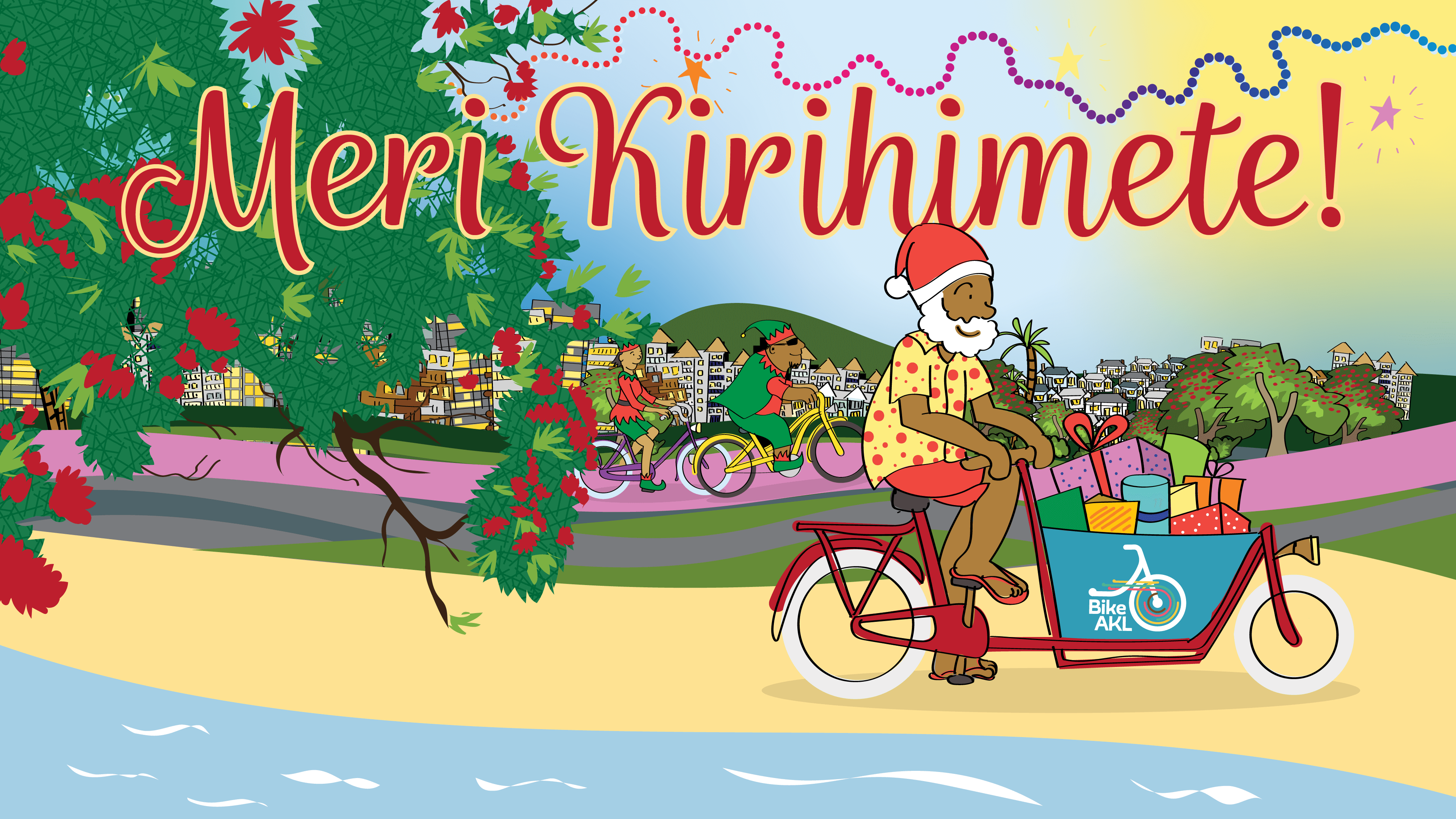Electric bikes are not only heaps of fun to ride, they have the potential to transform how we commute. Understanding that potential is the job of The Future of the Bike, a collaborative research project that examines how innovations in bicycle technology and city planning can support urban sustainability in New Zealand. The project’s most recent study, Electric City, took a close look at e-bikes in Auckland and just what impact they might have on the city’s transport systems. Ross Inglis asked Research Fellow Dr Kirsty Wild to motor through the study:
Bike Auckland: Why the interest in e-bikes?

Kirsty: We haven’t had a lot of research in New Zealand into what’s happening with e-bikes, so it’s about time. We see them popping up everywhere and there’s a lot of interest in their impact. What effect are they having on people’s lives? Are they useful? Are they getting more people cycling?
BA: What specifically did you want to learn?
Kirsty: What role can e-bikes play in increasing sustainability, efficiency and well-being within our urban transport system? We used Auckland as a case study and I interviewed a range of experts, if you like – people who use e-bikes, people who plan for bikes, and also retailers.
We also did a mini-trial at Auckland Hospital. These people were not experts; they were people who were using their cars to get to work and were interested in making the switch to using an e-bike. They were very new to the technology. That helped us understand the issues around what happens in the workplace in terms of supporting people who try out using an e-bike. So they were two separate pieces of research that help us answer the question about what is the potential for e-bikes to really bring about some meaningful change in our transport system.
BA: What did the research show you about that potential?
Kirsty: The things that really stand out for me is the potential for e-bikes to expand our active transport radius. We traditionally think people might be willing to walk three kilometres and they might be willing to bike five — some people more, but most not. But the study showed that it was really common for people to ride 15 kilometres there and back on their e-bikes. That opens up places like Te Atatu, for example, which has access to a cycle highway that people can use for most of their ride. The point is that e-bikes are tripling our active transport radius, making it so much more accessible for a much wider group of people to use active transport.
The other thing that stood out is the value of the cycle highways. Places like the Northwestern Cycleway. E-bikers are faster cyclists and they need good conditions to ride on. They need the free flow that these cycleways provide. The great thing about the Northwestern is that it is right by the motorway; there are so many people stuck in cars and they’re seeing people on bikes on the cycle highway. They’re such a great mode-shift technology, those cycle highways.

BA: You also found that e-bikes can help more women get on bicycles.
Kirsty: That’s right. If we talk about pushbikes, women are generally about 20 percent of riders. On the Northwestern cycleway, women are 27 percent. But women are 41 percent of e-cyclists. And women themselves offered lots of examples in the study of why e-bikes make riding more realistic for them. I guess what stands out is the way e-bikes enable people to make more car-like trips – longer trips with more trip-chaining. And trip-chaining is more likely to be an issue for women – trips where you drop the kids at school and then go on somewhere else, all within a really tight time budget. Traditionally those trips might not have been possible on a bicycle, but e-bikes enable people to drop their kids off, carry a lot of stuff with them, and get to work without getting all sweaty. People think it’s a strength issue for women, but it’s also a time and responsibility issue for them. And e-bikes really help with those issues.
BA: It sounds like e-bikes can fill the gap between the pushbike and the car.
Kirsty: For a lot of trips, yes. Obviously not all trips, like going away on holiday with the family, for example. But for everyday transport, to work and back, they make possible trips that haven’t really been realistic for people on a bike because it was too far and it took too long at the other end for showering and that sort of stuff, and also because people just had too much to carry. So many participants talked about being able to do the shopping on the way home; they didn’t need to ride home and then get into the car to do the shopping.
So yes, e-bikes are a middle-mode. They enable people to make more car-like trips. The research shows they’re quite an effective tool for mode-shift for two reasons. One, they enable people to make more car-like trips and two, they’re quite fun. Cycling has the highest mode satisfaction.
BA: Some of your participants thought e-bikes were still too expensive.
Kirsty: Yes. Eighty percent of New Zealanders have less than $10,000 in savings, so the thought of spending $3000 on a bike is just unrealistic for them. It’s also because culturally we have this sense of transition from bike to car and we associate bikes with being a relatively low-cost leisure device.
One of the retailers we spoke to talked about customers being scared to buy a leisure device that’s going to end up in the back of the garage like the kayak or the ab machine. Plus, people have concerns about safety, and they want to try an e-bike out first to see if it is worth spending $3000 on. That was one of the recommendations I made, actually – that we find ways to let people take an e-bike home for a couple of weeks so they can get a sense of whether they feel safe enough on their particular commute. It’s a lot of money to spend if you just don’t know if you’re actually going to use it.
BA: Was there anything in the research that really surprised you?
Kirsty: I was surprised at how far people were riding their e-bikes. Plenty of them were doing 15km trips. Possible there’s a time budget issue there; ebikes let people do longer rides in less than an hour. One of the reasons people buy an e-bike is because their current commute is awful. Current commuting conditions can be really horrible in a car. International research shows that commuting in congested conditions has a wearying effect on people’s lives.
That was something that came through so consistently when we asked people, particularly those on the Auckland Hospital trial, why they made the switch to an e-bike: it’s not just how long the commute takes, it’s the reliability of the arrival time. Really stressful for car drivers. There were drivers leaving at six in the morning because otherwise they couldn’t be sure what time they’d get to work. And when they get there, they have horrific parking problems at the hospital. What a difference an e-bike can make to people’s lives, being happier and more productive, just because their arrival time is now reliable.
BA: So when you buy an e-bike, you’re also getting some extra happiness?
Kirsty: Well, cyclists are consistently shown to be the happiest commuters. And e-bikes are a way of making the benefits of cycling available to a broader group of people. Traditionally cycling has been seen as viable within maybe a five-kilometer radius from the CBD, now with e-bikes that is 15km. People say bikes are cheap, and that’s true: you can buy a bike for $500 but then you need to spend $2 million on a house that is close enough to the CBD to make biking realistic. E-bikes make it possible to live out a bit further and still take advantage of the benefits of cycling. That explains one of the recommendations we made: to invest more in cycle highways because they’re so successful at getting people riding.
BA: What happens to your research now? Will it feed into policy?
Kirsty: Certainly Auckland Transport is really interested in it and I’ll be trying to talk to ministers about it as well. We’re in this open space right now with what is going to happen with electric vehicles. In the UK they decided to subsidise e-cars but not e-bikes; I feel like it’s time to advocate for subsidies and for cities to support e-bikes and not just e-cars. We’ve got politicians and policy-makers who are really interested in this space, so the research has the potential to be really useful.
Electric City’s 10 recommendations:
- Provide more separated cycle lanes.
- Provide free-flowing, protected cycle highways within the 15km e-bike ‘goldilocks zone’.
- Separate pedestrians from cyclists where possible.
- If an e-bike speed cut out is introduced, it is recommended that it be 32km/hr rather than 25km/hr.
- Reduce the speed limits on more urban roads to 30km/hr.
- Provide opportunities for people to try out an e-bike for a trial period of two weeks.
- Reduce the cost of e-bikes.
- Create a new ‘E-bikes at work’ website
- Investigate opportunities to make e-bikes available to low-income people.
- Provide more secure bike parking, with e-bike charging facilities.




